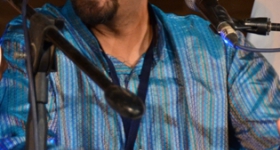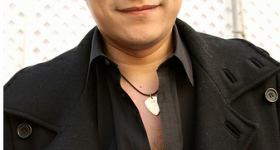Writer Calvin Liu Photographer Jack Vartoogian
There have been only two toy pianists of world renown: the first, Wendy Mae Chambers, a former prodigy who has gone on to manage vacation properties from the Jersey Shore to the French Quarter, resurfaced on The Tonight Show with Jay Leno in 2000 to perform the “organ” she created with 25 car horns, a keyboard and a car battery charger, but has again fallen into obscurity.
Not so for Brooklyn's Margaret Leng Tan, a Singapore native who came to the United States at age 16 on a music scholarship, and later became the first woman to earn a doctorate from Juilliard. A celebrated performer of avant-garde keyboard music (particularly that of Harry Crumb and the late John Cage, both of whom Tan counts as dear friends), she says her toy piano career began “quite by accident”—she bought her first one used, with only the intention of trying out Cage's “Suite for Toy Piano.”
A decade later, Tan continues to elevate the toy piano from mere child's play to a legitimate instrument. Major composers have written music specifically for Tan's toy piano; many of these pieces made their West Coast debut at the Other Minds Festival in San Francisco in March 1999.
Tan recently appeared in Evans Chan's documentary Sorceress of the New Piano: The Artistry of Margaret Leng Tan, which made its U.S. premiere this spring at the San Francisco International Asian American Film Festival. For the screening, Tan planned to perform Erik Griswold's obviously tongue-in-cheek “Old McDonald's Yellow Submarine.” Another Griswold piece in her repertoire is “Bicycle Lee Hooker,” in which she also plays a train whistle, bicycle bell and horn.
“I like the idea of being a one-woman circus,” Tan says. “Circus in the good sense of the word. Not a freak. Or maybe I am a freak.”
It was at the Other Minds Festival where I first bumped into Tan in a dim, echoey hallway. She had an almost mystic presence, her polished hair reflecting distant lights sharply like a handheld mirror. When she took the stage with her tiny pianos and a toy boombox, the initial impulse was to laugh. Unwittingly, I had fallen right into Tan's social commentary trap.
“It's a typical comedian's approach (to make people laugh),” she says. “And then you make them feel guilty by saying I bought (the boombox) for three dollars in Chinatown. Perhaps it was made by child labor.” I remember the audience's reaction from six years ago: naive, guilty or not, it was a standing ovation.
In Noise Water Meat: A History of Sound in the Arts (MIT Press, 1999), Douglas Kahn notes that after Cage—which Tan refers to as A.C.; B.C. would be “before Cage”—there is no longer an “unsuspecting audience.” After listening to Tan, I realize now that this is one exception. Her conservatory training is so reassuring that her antics onstage can only be met with innocence and marvel, whether she's blasting the boombox on Julia Wolfe's “East Broadway” or drumming soy sauce dishes and cat food tins in Guy Klucevsek's “Sweet Chinoiserie.”
It’s only in part Tan's fault, anyway, since she draws a strict line between composition and performance. “I am a mouthpiece through which these composers are heard,” she says, adding that she has never written her own music. “I am not brave enough to let go of my role as an interpreter.”
Listen to Tan at the 1999 Other Minds
Festival at Otherminds.org
Calvin Liu is editor of Bullfight Review and The Glut: Journal of Prose and Praise of Gluttony. He lives in Northern California.









Comments